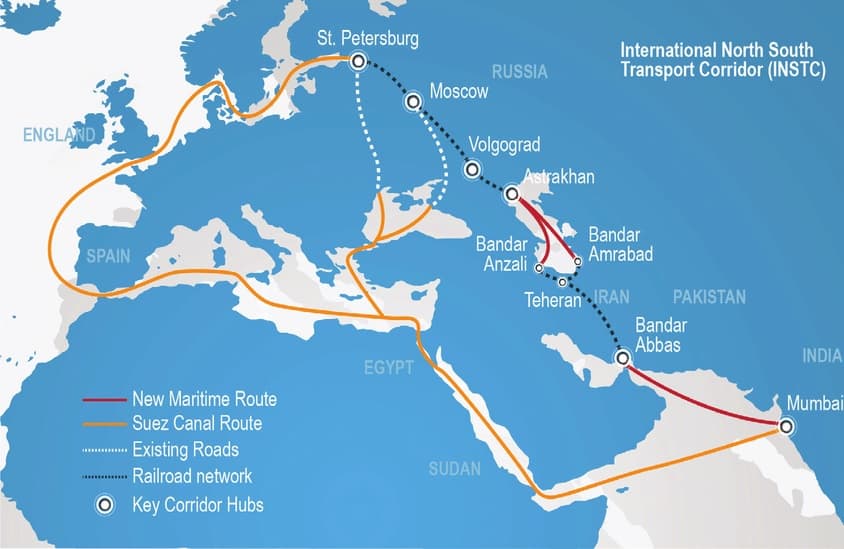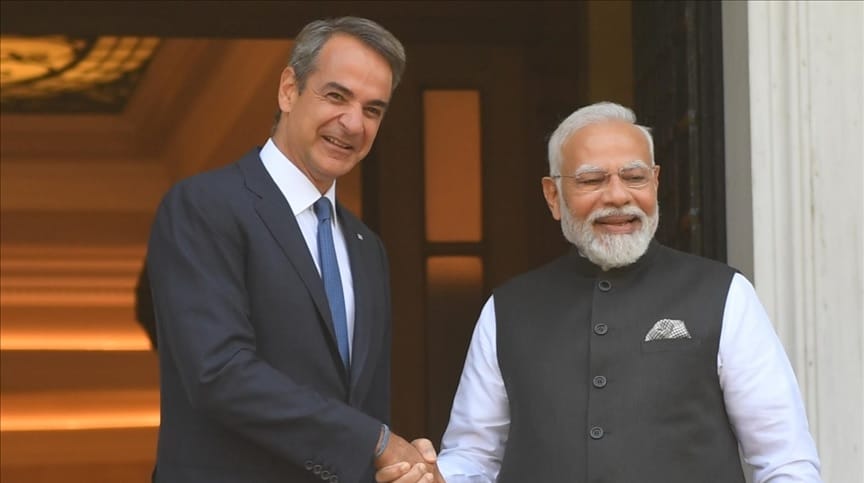The Central Asian region is part of India’s “extended neighbourhood” and is of great geostrategic value to India, especially as New Delhi tries to balance China’s massive presence.
INDIA has come to be considered the next global factory, increasing its share of the international market by taking full advantage of its lower labour costs (an hourly wage is 1/3 that of China) and specialising mainly in labour-intensive industry and software development.
As a country with a democratic polity, without a demographic problem and the largest of the “Altasias” countries (Vietnam, Thailand, Malaysia, the Philippines), it can compete with China. With China’s economic growth and rising Chinese household income, labour costs have risen, reducing China’s comparative advantage in supplying cheap labour-intensive goods to the world.
China’s ECONOMY is moving into higher value-added fields at higher costs. In addition, the ongoing US sanctions and restrictions on China create opportunities for India to attract industries that are leaving China.
China’s debt-fueled rapid economic growth, housing bubble, slowing growth, uneven distribution of wealth, coastal development and shrinking hinterland, and other problems it faces portend that it will soon erase its path. From 1995 onwards, Japan faced the same issues.
Europe’s MARKET accounts for around 20% of global GDP and is the world’s second-largest market. In 2060, India will be the 2nd largest country in terms of GDP, after China, followed by the USA and the EU.
To become the country with the second largest GDP, it needs its own “Silk Road” to channel its products to Central Asia, Russia and the rich market of Europe.
THE INTERNATIONAL International North-South Transport Corridor (INSTC) between India, Iran and Russia transports goods from Mumbai to St. Petersburg and from there to the great market of Europe.
The ambitious INSTC project was conceived in September 2000 and later entered into force in 2002 after being ratified by the three countries.
Since then, 11 more nations have joined the project: Armenia, Azerbaijan, Belarus, Bulgaria (observer status), Kazakhstan, Kyrgyzstan, Oman, Syria, Tajikistan, Turkey and Ukraine. INSTC reduced the freight cost as well as the transportation time.
Whereas earlier, it took more than 40 days for goods to travel from India to Russia, with INSTC, the transportation is completed in less than 25 days, thereby reducing the transportation time by 30%-40%.

ON THE CHART in the red line is the INSTC corridor. Indian goods by sea from Mumbai, India’s financial hub, through Iran’s Chabahar port land on land bypassing Pakistan.
Without the INSTC, goods would have to follow the blue line, through the Suez Canal, from Gibraltar, the English Channel and the Baltic Sea to reach Russia.
With a hostile neighbour like Pakistan sandwiched between India and the Central Asian region, in the past, India could not extend its reach into Central Asia. Pakistan is no longer an obstacle for India in this regard.
UNDER India’s Connect Central Asia policy, the Central Asian region has already assumed great importance. With the functioning of INSTC, the India-Central Asia relationship has been strengthened.
The Central Asian region is part of India’s “extended neighbourhood” and is of great geostrategic value to India, especially as New Delhi tries to balance China’s massive presence. Moreover, India-Russia trade relations have also gained new energy with the help of INSTC.
This is also the reason for India’s neutrality in Russia’s invasion of Ukraine. Russia has been India’s long-standing ally, but Moscow’s recent overtures to Pakistan have worried Indians.
INSTC is India’s answer to China’s Silk Road, the Belt and Road Initiative (BRI).
China is India’s most powerful neighbour in the region and its main competitor, controlling through the multiple Silk Roads almost all the freight channels around China. India’s ambition to counterbalance China is realised through the operation of INSTC.
AFTER Western sanctions, Russia will switch to INSTC supply, mainly benefiting its traditional ally, India. The North-South International Transport Corridor is set to increase trade with Russia. But, due to the sanctions and the war in Ukraine, the Indian Silk Road will stop at Russia.
It will not be able to approach the European market through Russia. In this case, Europe’s alternative approach is the sea route. Turkey by land could also be an alternative, but its close relations with Pakistan (India’s enemy) give it no choice.
The SEA route favours Greece as a gateway to Europe, which can, through ports and other transport infrastructure, offer supply chain services to Indian goods that will pass through the Suez Canal and thus develop an important partnership with India.
We hope that the visit of the Indian Prime Minister will be used in this direction.
By Giorgos Atsalakis, Associate Professor, Technical University of Crete, Data Analysis and Forecasting Laboratory.
READ MORE: The contribution of the Greeks and Philhellenes of India to Greece’s Independence.

